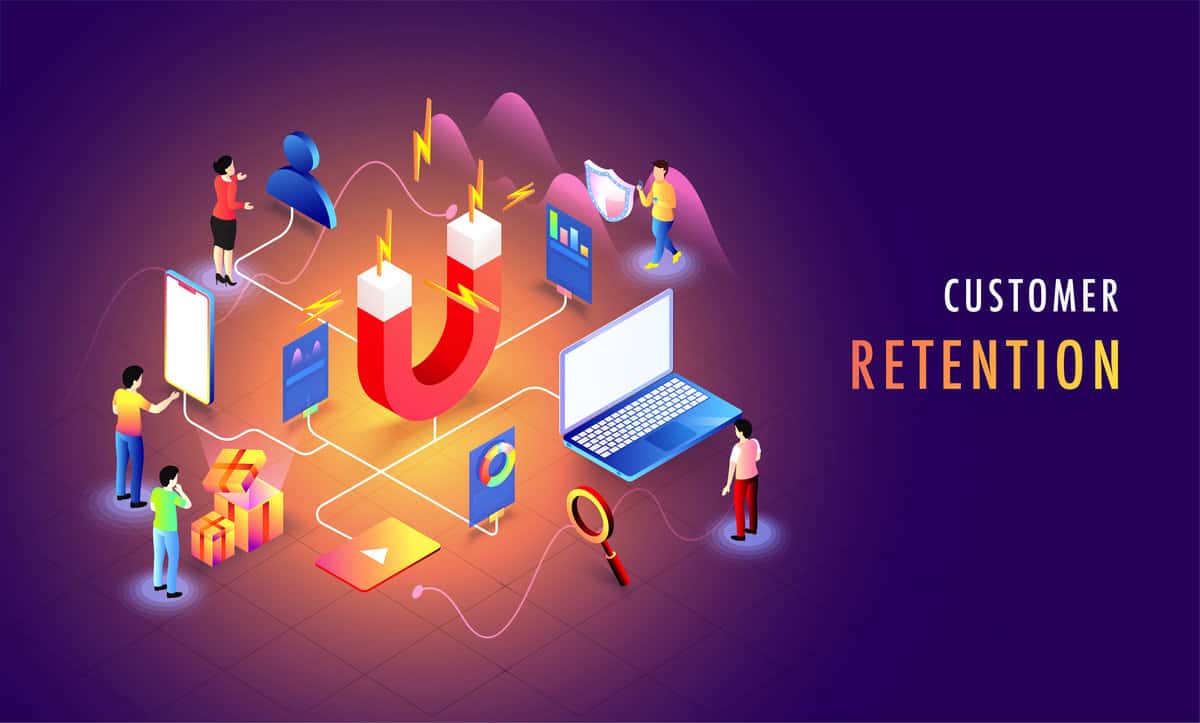
It costs far more to win a new customer than to secure repeat business with a customer you’ve already worked with. That’s the bottom line for customer retention. The bigger your pool of repeat customers who come to you time and time again for your services, the easier it is to forecast your upcoming work. You spend less money on advertising to fill your calendar. Your onboarding costs go down. That customer becomes an advocate, sending more business your way from their connections. They give you great case studies, which in turn help you secure more work.
Customer loyalty is an amazing way to future-proof your business. But how do you turn a customer into a fan? If you think about the brands you love and use over and over again, it wasn’t one thing they did to win your loyalty. There have probably been dozens of tiny interactions, each reinforcing your belief that you made the right choice to trust them with your business.
The road to customer retention in professional services is much the same. You have many touchpoints and opportunities to shift a customer from believing you are just someone they’ve engaged for a simple piece of work to believing you understand their challenges and can help solve them, today and in the future. That’s the bid-to-bill-to-loyalty cycle, and it works like this.
A Great First Impression
It’s probably no surprise to you that customers like it when you deliver proposals on time (or early) and they include all the information requested. And it’s probably no surprise to you that those proposals do far better than the quick documents you throw together at the last minute in the hope of winning the bid.
Proposal automation helps you make a great first impression by taking the heat out of creating the documentations you need. Automation helps collect and collate up-to-date information to help in the bid. When all the information you need is in the right place, it’s an easy job for your Sales team to put together a winning proposal. The other benefit of technology-enabled proposal creation is that it brings Sales and Services closer together. The outcome is a proposal that aligns more closely to the customer’s expectations.
All of this helps make a positive first impression on a customer. They see you produce a realistic, timely and on target proposal that meets their needs. They can see the Services team has been involved, and that helps make the proposal more believable – increasing confidence that your firm can do what you say it can.
A Successful Project
After winning the bid, you have to deliver the work. As the Sales and Services teams worked closely together on the proposal, the handover from the sales phase to the delivery phase is straightforward. Customers appreciate not having to repeat a whole lot of information they passed on to the Sales team. A knowledge-enabled professional services tool keeps all that information to hand, for whoever on your team needs to know it.
Beyond the handover, much of the work to drive customer loyalty happens in the execution of your projects. First, your project should be mobilized quickly, bringing together familiar faces from the bid team and new subject matter experts to carry out the work. Second, make use of your organizational knowledge to deliver an excellent piece of work. Use enterprise-wide knowledge management tools to ensure that your professional services firm can operate quickly and with the customer’s best interests at heart.
Read next: Knowledge Management is the Secret to Customer Success
Customer Engagement
It should go without saying that you have more chance of repeat business if you did a good job the first time. But how do you know that your customer is satisfied? Throughout the project lifecycle, capture customer feedback in a variety of ways. Use quick surveys and automated tools alongside your team having conversations with clients to find out how they feel the project is going. Do the same for your own team as well, capturing employee feedback during the project. As a leader, you can use this soft intelligence to understand how the project is performing from both sides, stepping in as required to help both staff and customers make it a success. You may need to improve service levels in the project, for example.
Another option is automated customer reference requests. As the project draws to a close, automate the process of gaining testimonials and case studies to save time on both sides. If you struggle to get more than a nod of the head and an “Everything was fine,” automating the referral process could help you get better feedback. There’s some anecdotal evidence to show that customers are more likely to give honest, constructive feedback via an automated, online process than face-to-face requests, so you may find the feedback is more useful to you. Automated customer reference requests can help turn customers into loyal advocates because they have opportunity to reflect on the work your business has delivered for them.
Gaining a repeat customer doesn’t start at the point you handover a successful project. The bid-to-bill-to-loyalty cycle starts early on in your interaction with a customer. They start to form an opinion about what your PS firm is like to work with from the point your proposal arrives in their inbox. Use the whole lifecycle, supported by technology to make all of this seamless, to make an excellent impression from Day 1 and beyond.
For more on how professional services automation is being redefined as a customer-centric services proposition, watch this video.
